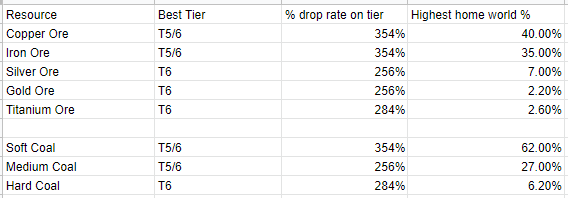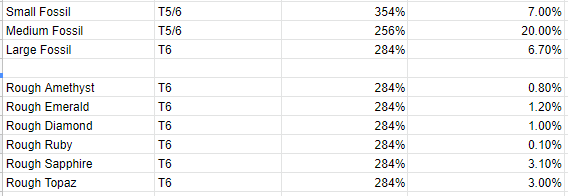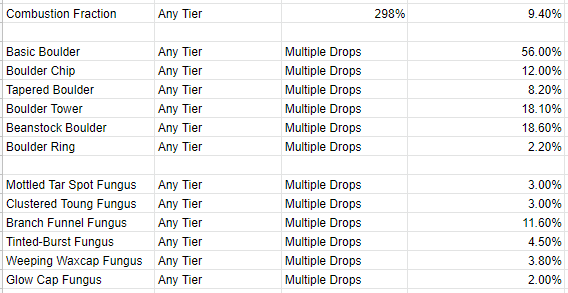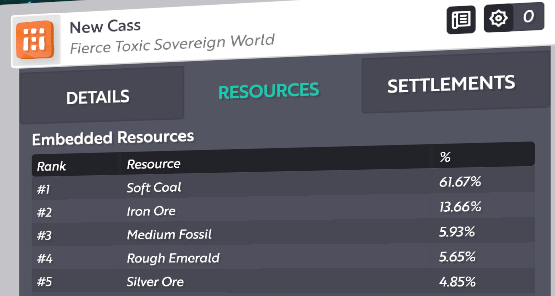Hey,
After rolling a few planets I realized I don’t know what is a ‘good’ percentage for resources. Especially for resources I don’t commonly gather. If a planet has a high percentage it might be a great farm planet for that resource.
I included which tier planet has the highest drop percentage thanks to Block Drops Boundless and then crossed it with the data from portal-seekers.com/explorer.
The goal was to give me an idea of what was a “good” percentage so that I could compare it to my planets. Understandably, a lower percentage but is condensed and really easy to farm or other factors matter…however I wanted a starting point and base line.
Below are the best percentages from our home worlds for the different materials and what tier planet has the highest drop rate for that resource.




Hope it helps! <3

 thanks for explaining it!
thanks for explaining it!